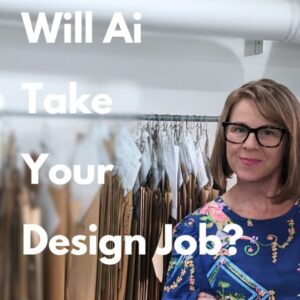Fashion Design: Human Creativity and AI Collaboration

Are you concerned AI might stitch you out of your fashion design job? There’s a lot of chatter in the industry about artificial intelligence (AI) revolutionizing fashion design. This fear typically centers around AI’s potential to replace roles traditionally held by humans, such as pattern makers and designers. However, a deeper dive into the subject reveals a nuanced view worthy of discussion.
The fear that AI can now create patterns and designs better than humans was hinted at but is yet unfounded. After speaking with the author of an article predicting the end of traditional pattern making and designing roles due to AI, it’s clear that such anxieties may be premature. The reality is, aspects of fashion design, like understanding fabric behavior and integrating the latest style nuances, are nuanced skills beyond AI’s current reach.
Despite AI’s advancements, the unique elements of design such as textile reaction and aesthetic judgment cannot be easily replicated by machines. These are areas where human designers excel due to their experience and intuition, suggesting that AI is more of a complement rather than a replacement.
The interaction between designers and pattern makers, rooted in a deep understanding of materials, fit, and style preferences, is complex. Explaining these intricate details to an AI system effectively is currently impractical. For AI to replicate the role of a pattern maker or designer accurately, it would require an extremely sophisticated understanding of not only design principles but also the subtleties that make each piece unique.
Click the image below to see this weeks video on Instagram
AI’s inability to handle the nuanced demands of fashion design means human creativity and expertise remain irreplaceable. The complexity of design communication, adjustments, and the delicate balance of elements that a pattern maker considers are yet to be within AI’s grasp.
AI can serve as a powerful tool for designers by easing certain aspects of their workload, like predicting trends based on data analysis. This offers an opportunity to blend traditional craftsmanship with modern technology, enhancing the design process rather than overshadowing human roles.
Embracing AI for its utility in streamlining repetitive tasks or providing inspiration allows designers and pattern makers to focus more on creative and critical aspects of design, where human touch is indispensable.
The continuous evolution of technology means the interaction between designers and AI will only get more integrated. Yet, this relationship is foreseen as collaborative, with AI serving as a tool to extend human capability rather than a direct competitor.
The future of fashion designing with AI looks more like a partnership, with designers leveraging AI for efficiency and innovation while continuing to rely on human creativity and intuition for the final touch. This balance ensures a place for both AI tools and human designers in the evolving landscape of fashion.
To thrive in an industry increasingly influenced by AI, designers and pattern makers should focus on cultivating skills that remain distinctly human, such as creativity, emotional intelligence, and craftsmanship. By leveraging AI as a tool rather than viewing it as a threat, professionals can enhance their work and remain indispensable.
Embracing continuous learning and adapting to new technologies ensures that designers and pattern makers can stay ahead, making the most of AI while safeguarding the irreplaceable value of human creativity and insight in fashion design.
While the idea of AI revolutionizing fashion design is intriguing, it’s clear that AI is not set to replace human designers and pattern makers anytime soon. Instead, AI presents an opportunity to enhance the design process, allowing for a more seamless integration of creativity and technology. By focusing on developing skills that emphasize human creativity and leveraging AI for efficiency, professionals in the fashion industry can confidently navigate the future, ensuring their place alongside AI rather than in competition with it. The key is to view AI as a collaborator, not a competitor, in the ongoing story of fashion design.
